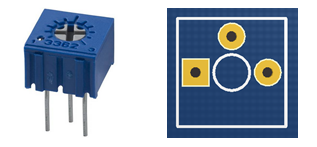Orange Squeezer
The Orange Squeezer is a classic DIY guitar project. This simple circuit provides an effective and smooth compression effect. It is perfect to control and shape the dynamics of the guitar sound.Steps
Categories
Status: Active
Designators and components Step 2 of 5
COMPONENT LIST
PCB
PCB ORANGE SQUEEZER PCB
Resistors
R1 2.2M 2.2M OHM 1/4W 1% METAL FILM RESISTOR
R2 82k 82K OHM 1/4W 1% METAL FILM RESISTOR
R3 470k 470K OHM 1/4W 1% METAL FILM RESISTOR
R4 390k 390K OHM 1/4W 1% METAL FILM RESISTOR
R5 2.4k 2.4K OHM 1/4W 1% METAL FILM RESISTOR
R6 470k 470K OHM 1/4W 1% METAL FILM RESISTOR
R9 220k 220K OHM 1/4W 1% METAL FILM RESISTOR
R10 10k 10K OHM 1/4W 1% METAL FILM RESISTOR
R11 1.5k 1.5K OHM 1/4W 1% METAL FILM RESISTOR
R12 100k 100K OHM 1/4W 1% METAL FILM RESISTOR
R13 470k 470K OHM 1/4W 1% METAL FILM RESISTOR
Capacitors
C1 47n 47NF 100V 5% POLYESTER FILM BOX TYPE CAPACITOR
C2 2.2n 2.2NF 0.0022UF 100V 5% POLYESTER FILM BOX TYPE CAPACITOR
C3 47n 47NF 100V 5% POLYESTER FILM BOX TYPE CAPACITOR
C4 4.7u 4.7UF 35V 105C RADIAL ELECTROLYTIC CAPACITOR 5X11MM
C5 4.7u 4.7UF 35V 105C RADIAL ELECTROLYTIC CAPACITOR 5X11MM
C6 4.7u 4.7UF 35V 105C RADIAL ELECTROLYTIC CAPACITOR 5X11MM
C7 4.7u 4.7UF 35V 105C RADIAL ELECTROLYTIC CAPACITOR 5X11MM
C8 100u 100UF 35V 105C RADIAL ELECTROLYTIC CAPACITOR 6X11MM
Diodes
D1 1N34 1N34A GERMANIUM DIODE
IC
IC1 4558 NJM4558 4558 DUAL OPERATIONAL AMPLIFIER GENERAL PURPOSE IC
Transistors
Q1 2N5457 2N5457 JFET N-CHANNEL TRANSISTOR SMD
Q2 2N5457 2N5457 JFET N-CHANNEL TRANSISTOR SMD
Potentiometers
VOL 10k-A 10K OHM LOGARITHMIC TAPER POTENTIOMETER
BIAS 10k 10K OHM TRIMMER POTENTIOMETER CERMET
PCB


PCB SCHEMATIC

GENERAL DESCRIPTION OF COMPONENTS
Resistors
The resistors should be ¼ Watt metal type. You can either use a multimeter or the color bands to obtain their values. Resistors do not have polarity, you can place them in any direction.

Electrolytic capacitors
Electrolytic capacitors have their value printed on them. The negative polarity pin is indicated by a white strip along the can. They also have a longer leg indicating the positive pin. The maximum voltage rating never can be exceeded, make sure you are using at least double voltage rating than your power supply. For example, if you are using a 9V power supply, use a electrolytic capacitor with at least 18V maximum voltage rating.
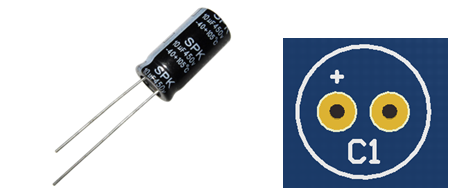
Polyester capacitors
The polyester capacitors have their value marked with three numbers. Read as picofarads (pF), the first two are the 1st and 2nd digits and the third is the multiplier code. These capacitors do not have polarity, you can place them in any direction.

Ceramic capacitors
The ceramic capacitors have their value marked with three numbers. Read as picofarads (pF), the first two are the 1st and 2nd digits and the third is the multiplier code. These capacitors do not have polarity, you can assemble them in any direction.
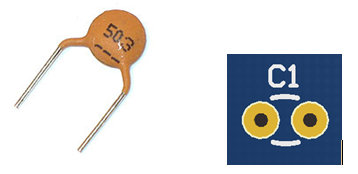
Tantalum capacitors
Tantalum capacitors have the value printed on them. The polarity is marked for the positive pin. Additionally, the longer leg is the positive and shorter the negative. Assemble the tantalum capacitor according to the positive polarity (+) marked on the PCB.
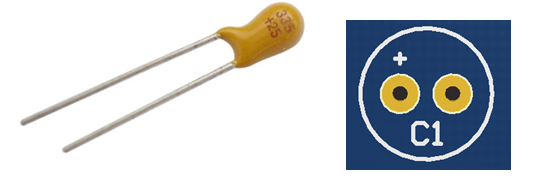
Integrated Circuits
Integrated Circuits (ICs) have their model printed on them. A notch half-circle or a dot indicates the correct position of the IC on the PCB.
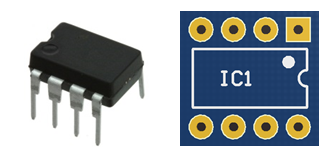
Diodes
Diodes have their model printed on them. The polarity (cathode) is indicated by the ring near the side. This ring is also marked on the PCB.
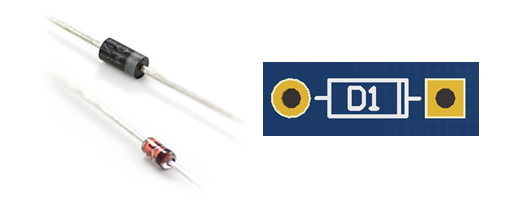
Led diodes
Led diodes have polarity, the cathode is indicated as a flat surface on the side of the diode and also it is the shorter led. On the PCB, the cathode is marked as a flat side and anode as a round side.

Transistors
Transistors are three terminals components and their model is printed on them. To indicate the correct orientation, one side of the transistor is flat and the other one is round.
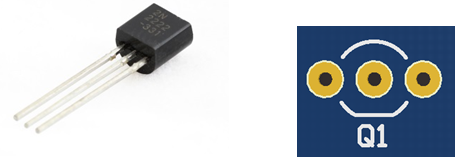
Potentiometers
Potentiometers have their resistance value marked on them. They are marked with A, B or C for logarithmic, linear and reverse logarithmic, respectively.

Trimpots
Trimpots are similar to potentiometers. Their values are printed on them. Use a small screwdriver to adjust them.
